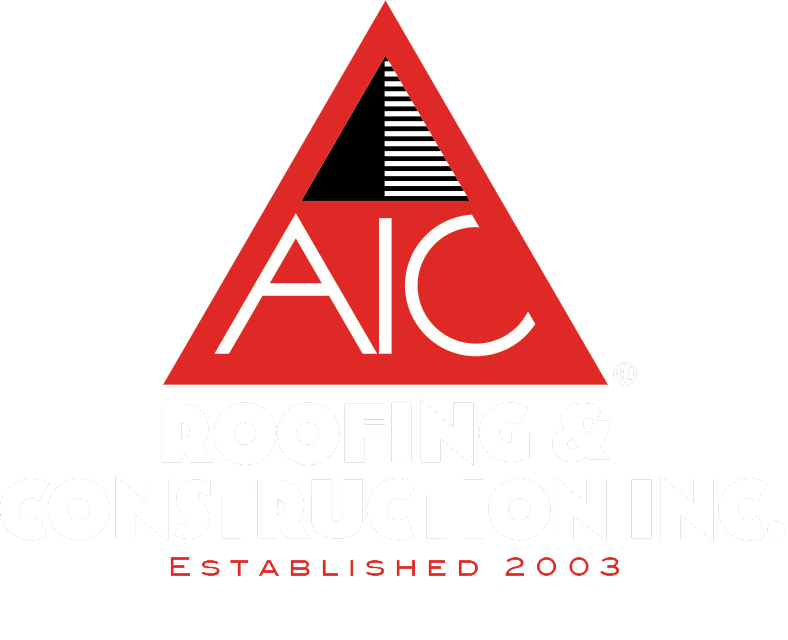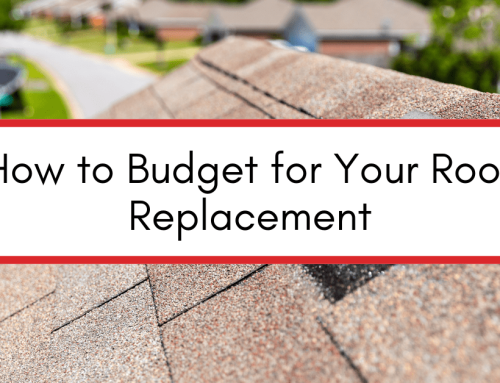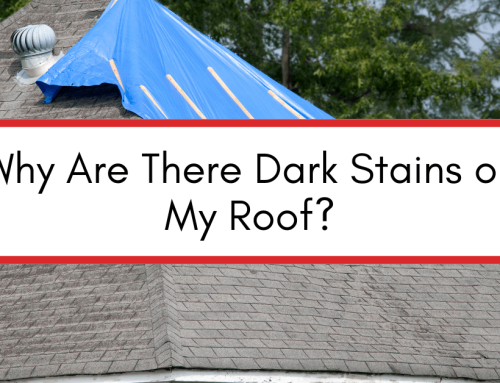Roof ventilation is an essential element for maintaining a comfortable and energy-efficient home environment. By allowing air to flow freely through the attic space, roof ventilation reduces energy consumption, improves indoor air quality, and extends the lifespan of your roof.
Understanding the concept of roof ventilation and its role in energy efficiency can help homeowners make informed decisions to optimize their homes’ ventilation system. It’s also important to understand the critical role roofing ventilation plays in the energy efficiency of your home, so you can spot warning signs that your ventilation is failing.
In this article, we’ll cover what roof ventilation is, why it’s important and the impact it has on your home’s energy efficiency.
Understanding the Concept of Roof Ventilation
Roof ventilation refers to the process of allowing air to circulate through the attic space of a residential home. It involves the intake of fresh air from the exterior and the expulsion of stale air, moisture, and excess heat. By creating a continuous flow of air, roof ventilation helps regulate temperature and humidity levels, preventing the build-up of moisture.
Proper roof ventilation is crucial for maintaining the structural integrity of a building and ensuring the comfort and well-being of the homeowners. Without adequate ventilation, an attic can become a hot and humid environment, leading to a range of issues such as mold growth, rotting of the roof deck, and increased energy consumption.
What is Roof Ventilation?
Roof ventilation is achieved through the installation of vents or fans on the roof or in the soffit area. The vents allow outside air to enter the attic space, while the fans promote air movement by expelling hot air. The combination of intake and exhaust vents ensures a constant flow of fresh air, removing heat and moisture from the attic.
Intake vents, such as soffit vents, are strategically placed at the lower portion of the roof to draw in cooler outside air. This air enters the attic and rises, carrying away heat and moisture. Exhaust vents, on the other hand, are installed at the higher points of the roof, such as ridge vents or gable vents, to allow hot air to escape. This natural process of air movement helps maintain a balanced and healthy attic environment.
Types of Roof Ventilation
There are various types of roof ventilation systems available, each designed to suit different architectural styles and climatic conditions.
· Ridge vents are one of the most common types of roof ventilation. They are installed along the peak of the roof, allowing hot air to escape. Ridge vents are discreet and blend seamlessly with the roofline, providing an effective means of ventilation without compromising the aesthetics of the building.
· Soffit vents, also known as eave vents, are located under the eaves of the roof. They draw in cooler outside air, which then rises and exits through the ridge vents or other exhaust vents. Soffit vents are essential for maintaining proper airflow and preventing the formation of condensation and moisture-related problems in the attic.
· Gable vents are typically placed on the exterior walls of the attic. They provide an additional means of ventilation, ensuring balanced air circulation. Gable vents are particularly useful in situations where ridge vents alone may not be sufficient to expel all the hot air from the attic.
· Solar-powered fans are a more energy-efficient option for roof ventilation. These fans utilize the sun’s energy to power the ventilation system, providing continuous air movement. Solar-powered fans are especially beneficial in areas with ample sunlight, as they can operate without relying on electricity from the grid.
In addition to these types of roof ventilation, there are other specialized systems available, such as turbine vents and power vents. Turbine vents use wind power to create suction and draw out hot air, while power vents are electrically powered and can be controlled manually or automatically.
Overall, choosing the right type of roof ventilation system depends on factors such as the climate, roof design, and personal preferences. Consulting with a roofing professional can help determine the most suitable ventilation solution for a specific building.
The Role of Roof Ventilation in Energy Efficiency
Roof ventilation plays a crucial role in improving energy efficiency and reducing both cooling and heating costs. It achieves this through various mechanisms that minimize the workload on your HVAC system and enhance overall thermal comfort.
Proper roof ventilation not only extends the lifespan of your roof but also contributes to a healthier living environment. By allowing for the exchange of air, it helps prevent moisture buildup and the growth of mold and mildew. Additionally, it helps remove harmful pollutants and odors, ensuring better indoor air quality.
How Roof Ventilation Reduces Energy Consumption
Efficient roof ventilation helps prevent the accumulation of excessive heat in your attic. When hot air is allowed to escape through the ridge vents or powered fans, it reduces the temperature in the attic space and prevents heat transfer to the living areas below. As a result, your cooling system doesn’t have to work as hard to maintain comfortable indoor temperatures during the hot summer months, ultimately leading to reduced energy consumption and lower utility bills.
Moreover, roof ventilation also plays a vital role in winter months. By allowing proper airflow, it helps prevent the buildup of condensation and moisture in the attic, which can lead to insulation damage and ice dam formation. This, in turn, helps maintain a more stable indoor temperature and reduces the need for excessive heating.
The Science Behind Ventilation and Energy Efficiency
Roof ventilation works on the principle of convection. Hot air naturally rises, and when it reaches the attic space, it accumulates, increasing the temperature. Without proper ventilation, this heat radiates downward, making the living areas warmer and requiring more cooling. By implementing an effective ventilation system, you create an upward air movement, allowing hot air to escape and be replaced by cooler air from the outside. This continuous flow of air prevents the attic from becoming a heat trap and reduces the strain on your cooling system, leading to energy savings.
Furthermore, roof ventilation can also help mitigate the effects of solar radiation. During the day, the sun’s rays can heat up the roof surface, causing the temperature inside the attic to rise. With adequate ventilation, this excess heat is expelled, preventing it from being transferred to the rest of the house. This not only reduces the demand for air conditioning but also helps prolong the lifespan of your roof materials by minimizing thermal stress.
In conclusion, roof ventilation is a critical component of energy-efficient homes. By promoting proper airflow and preventing the buildup of heat and moisture, it helps reduce energy consumption, enhance indoor comfort, and contribute to a healthier living environment. Whether through ridge vents, powered fans, or other ventilation systems, investing in roof ventilation is a wise choice for homeowners looking to optimize energy efficiency and save on utility costs.
Benefits of Residential Roof Ventilation
Just to recap, proper roofing ventilation is key to a comfortable home and a healthy, long lasting roof. The benefits of proper roofing ventilation include:
Improved Air Quality
Proper roof ventilation helps maintain a fresh and healthy indoor environment by preventing the accumulation of moisture, mold, and other harmful substances. By removing excess humidity, roof vents inhibit the growth of mold and mildew, which can lead to respiratory problems and allergies.
Furthermore, a well-ventilated attic can also help eliminate unpleasant odors that may arise from stagnant air or the presence of pests. The constant airflow provided by roof ventilation systems ensures that any unwanted smells are quickly expelled, leaving your home smelling clean and fresh.
Extended Roof Lifespan
A well-ventilated roof allows heat and moisture to escape, reducing the risk of damage caused by excessive heat or condensation. High temperatures can accelerate the aging process of roofing materials, leading to cracks, warping, and premature deterioration. By lowering the temperature and controlling moisture levels, roof ventilation helps extend the lifespan of your roof, saving you money on costly repairs or replacements down the line.
In addition to protecting the roof itself, proper ventilation also safeguards the structural integrity of your entire home. Excessive heat and moisture can cause wood beams and trusses to warp or rot over time, compromising the stability of your house. By promoting air circulation, roof vents help prevent these issues, ensuring that your home remains safe and secure for years to come.
Reduced Energy Bills
One of the most significant benefits of residential roof ventilation is the impact it has on energy bills. By improving thermal comfort and reducing the workload on your cooling and heating systems, a properly ventilated attic space can lead to substantial energy savings.
During hot summer months, a well-ventilated attic prevents the buildup of heat, reducing the need for excessive air conditioning. This not only lowers your energy consumption but also extends the lifespan of your cooling system by reducing its workload.
In winter, roof ventilation helps prevent the formation of ice dams, which can cause water damage and increase the strain on your heating system. By allowing warm air to escape, roof vents maintain a consistent temperature in the attic, preventing the melting and refreezing of snow on the roof. This ensures that your heating system operates efficiently and effectively, resulting in lower energy bills.
Evaluating Your Home’s Roof Ventilation
Now that you understand the importance of roof ventilation and the benefits it offers, it’s essential to evaluate your home’s current ventilation system to identify any potential issues or areas for improvement.
Signs of Poor Roof Ventilation
There are several signs that indicate your home may have inadequate roof ventilation. These include excessive heat in the attic, mold or mildew growth, moisture stains on ceilings or walls, and an unpleasant smell in the house. If you notice any of these indicators, it’s crucial to contact a trustworthy Louisville roofing company to assess your ventilation and roof to ensure you don’t have any issues.
How to Assess Your Roof Ventilation
Assessing your roof ventilation involves inspecting the existing vents, their placement, and the overall airflow within the attic. You can also contact a local, Louisville roofing company to perform a free comprehensive evaluation and provide recommendations for improvement. It’s important to ensure a balanced intake and exhaust system, with vents properly distributed and sized according to your home’s specifications.
Final Thoughts
Residential roof ventilation plays a vital role in achieving energy efficiency and maintaining a comfortable living environment. By implementing a proper ventilation system, homeowners can enjoy improved air quality, extended roof lifespan, and reduced energy bills. Evaluating and enhancing your home’s roof ventilation ensures optimal performance and maximizes the benefits of this essential element of a well-maintained home.
Whether you have a roof issue that needs a simple repair or you’re in need of a full replacement, be sure to check out our Learning Center and YouTube Channel to find answers to all your roofing questions.
AIC Roofing and Construction has served homeowners in Louisville, Lexington and Richmond since 2003. We are in the top 2% of roofing contractors in North America to obtain the GAF MasterElite certification.
We would love to see if we would be a good fit for your project. If you’re ready to get a free estimate on your roof repair or replacement, contact us today!
3-tab attics barns chimney choosing a contractor commercial cost curb appeal DIY estimate financing flashing flat roof GAF glossary gutter replacement gutters gutter size gutter system ice dams inspections insurance missing shingles roof design roofing materials roofing system roof leak roof maintenance roof materials roof repair roof replacement roof shapes roof types shingle ratings shingles siding siding materials siding replacement skylights storm damage underlayment ventilation warranty winter







